- Home
- Penelope Lively
Life in the Garden Page 3
Life in the Garden Read online
Page 3
A garden, and gardening as an activity, were as earthily real to Virginia Woolf as to anyone else; but in her fiction, gardens and plants are manipulated, reinvented, bent to the purpose of the narrative in question. This happens time and again, as we shall see, in different hands; the fictional garden will have roots in its creator’s own experience, but on the page it becomes a metaphor.
And it was ever thus. The garden as image. The primordial garden, first of all. The Garden of Eden seems now a fragmented mythology embracing nudity, snakes, apples, innocence and expulsion, with the garden element somewhere in the background, an image that obtains in most actual representations from the Middle Ages onwards. Few pay much attention to what grew there: grass, greenery, perhaps a water feature. The painted Garden of Eden is, invariably, teeming with wildlife. Animals, animals, with Adam and Eve perched in their midst. Cattle, deer, horses, lions alongside a rabbit, and what looks like a unicorn, for Cranach. Tiger, leopard, peacocks, more rabbits, for Brueghel and Rubens. No identifiable flowers or trees. As for Hieronymus Bosch …
Back in the days of the Oxfordshire garden with streams, we would take a drink out there in the early evening, and Jack would say, settling comfortably into one of our sitting places: ‘Ah, the garden of earthly delights.’ I don’t think he can have had in mind Hieronymus Bosch’s painting of that title, which is a grotesque perversion of a garden, a kind of medieval science fiction. It is a triptych; the left-hand panel gives Adam and Eve centre stage, Adam sitting on the grass gazing at God, who holds Eve by the hand; in the background, a water feature with Gaudi-esque fountain, and fairly normal-looking elephant, giraffe and other creatures. It is in the large central panel that the sixteenth-century imagination gets into its stride. Innumerable nude figures are apparently behaving badly against a backdrop of, yes, turf, hedges, more water features and exotic ornaments, but that is all that is garden-like. The figures are mainly androgynous, with the occasional breasts or hint of a penis, and are shown upside down in a pond, inside a giant mussel shell, mounted on a procession of animals which are both realistic and fantastical, carrying a monster strawberry, and in fact generally conforming to some mysterious surreal aesthetic agenda. Scholarly opinion is divided, it seems, as to whether the work serves as a warning about moral decadence, or some celebration of a lost paradise. Maybe that’s the ‘garden’ reference. Though, if an image of the Garden of Eden, it does indeed give pause for thought; even the most committed naturist would be inclined to steer clear of this scene.
Paradise Lost is the prime textual account of the nature of the original garden. Milton has Satan as the witness, and he seems to be describing an extensive place; there are groves, lawns, level downs, grots and caves, a lake, a fountain. The furnishings are quite specific in some areas: nectarines, golden apples, purple grapes, along with roses (thornless roses, at that), acanthus, laurel and myrtle, iris, jasmine, violet, crocus, hyacinth, ‘flowers of all hue’. ‘All beasts of the earth’ too, with lions, bears, tigers named, and leopard, lynx, elephant, and, of course, the ominous serpent. And since Satan takes the form of a toad in order to whisper corruption into the ear of sleeping Eve, we must assume he got the idea from toad presence. Birds are noted collectively only, except for the nightingale. The place evoked does indeed sound paradisiacal, while the animals appear stripped of ferocity, merely gambolling, the lion dandling a kid. And Adam and Eve are the ancestral gardeners: ‘their sweet gardening labour’.
Efforts have been made, over time, to identify the location of the Garden of Eden. There is a Mesopotamian myth of a king, as primordial man, who was placed in a garden to guard the tree of life. Genesis says that God had planted a garden towards the east, in Eden, causing to grow there ‘every tree that is pleasing to the sight and good for food’. Rivers are named, including the Euphrates. Popular speculation has thus favoured southern Mesopotamia – present-day Iraq. The Mormons, on the other hand, insisted that the garden was in Missouri.
There is no mention of vegetation, apart from these trees, but an abundance of animal life must be presumed, since God had already set about mass creation, and Adam had subsequently been invited to name everything: ‘And God made the beast of the earth after his kind, and cattle after their kind, and everything that creepeth upon the earth …’ We gardeners may wish that He could have held back when it came to vine weevil and greenfly.
I suppose literal interpretations of the Bible need to identify a site, to be true to their own logic, but the account of the garden does seem so self-evidently a myth, an image. Nevertheless, the need for a real, findable, garden has persisted in some quarters. Matthew Kneale’s superb novel English Passengers makes use of the belief held by some actual nineteenth-century fantasist that the garden was sited in Tasmania. In the novel, a clergyman, fanatical in this belief, is one of a trio of Victorian gentlemen who succeed in more or less hijacking a ship crewed by Manxmen and sail to Tasmania where, eventually, they plunge into the bush in search of the site, accompanied by a young Aborigine. The book vividly depicts Tasmanian society of the day, with its greed, brutality, and the rounding-up of the Aborigines, which makes nicely ironic the placing of the Garden of Eden at the site of the most comprehensive ethnic cleansing operation ever. Unless, of course, you count the expulsion of Adam and Eve as such.
For those of us who prefer to take our Garden of Eden as a pungent myth, sited nowhere but within a cosmic imagination, there is the telling parallel meaning: paradise. The garden was paradisiacal, a paradise lost. The etymology here is intriguing, linking indeed the two concepts of a garden and of paradise. The word ‘garden’ descends from an ancient Indo-European word for an enclosure; ‘yard’ and ‘orchard’ derive from the same roots – and Americans call a garden a yard, so, an entirely prosaic and practical meaning. But the word ‘paradise’ is also of old Middle Eastern origin – Iranian – meaning an enclosure, again, but more particularly, walled estates or royal parks. Prosaic and practical once more, but the two seem closely related, and have mutated over time into the dual concept of paradise as a possible afterworld for the virtuous, and as an especially delectable earthly place. The term ‘paradise’ gets flung around at will. Google’s initial entry places it in Kensal Green (late-night parties at a bohemian, vintage-styled pub restaurant – I get the idea). And of course Cornwall has its own Eden project, with vast biomes housing rainforests and more.
So the concept of the garden carries overtones of paradisiacal potential. We may not feel that in our own, on a wet day with the weeds rampant, and the slugs and the snails and everything that creepeth upon the earth, but it is instructive to bear in mind the age-old implications of the terminology, of garden ancestry.
Both the practice of gardening and the idea of the garden mutate over time. If the concept springs from Eden itself, the practice seems to have been around far back into antiquity. There is both imagery and archaeological evidence for ancient Egyptian gardening. A tomb painting from around 1500 BC shows a pharaoh and his wife inspecting a rather formal-looking garden with date palms, sycomores (a kind of fig – nothing to do with our sycamore) and a water feature that, apart from the lotus and papyrus, would look quite comfortable as a show garden at Chelsea. Excavations have found evidence of the remains of gardens – flower beds, planting pits for trees that were supplied with water from irrigation ditches. At Amarna, wells and artificial lakes have been identified. Gardening would have been a struggle, in that dry climate, and therefore a luxury for the rich and powerful. I am reminded of the endless watering that went on in the Egyptian garden of my childhood – hoses hauled hither and thither, and, once a month, the event known as the flood, when the gardeners were allowed to make a temporary breach in the ditch that was fed from a nearby canal, letting water flow all over the garden for a few hours. Lovely – little fish swimming in the rose beds.
The Hanging Gardens of Babylon appear to be as elusive as the Garden of Eden when it comes to a definitive siting – the only one of the seven wonders of th
e ancient world that has not been located. There is plenty of archaeological evidence for Babylon itself, of course, about fifty miles south of Baghdad, but apparently no hint of the gardens, which, as described by classical writers, were a massive structure, built by King Nebuchadnezzar in about 600 BC. Tier upon tier of terraces were planted with mature trees, so that the whole appeared like a tree-covered hillside in this barren landscape. I get interested once more in the watering problem; machines raising water from the river are mentioned, a screw mechanism, Archimedes’ Screw. And the Egypt of my childhood again waves a hand – a form of Archimedes’ Screw was used there then, a familiar sight in the fields around our home, this large tube-screw being churned by a fellah in order to raise water from one level to another. Plus ça change … But there is much argument, it seems, about the Hanging Gardens, and whether, if they existed at all, they may not in fact have been at Nineveh, also in Iraq, at the site of present-day Mosul, where the Assyrian king Sennacherib had his palace, and, according to some scholars, has greater claims to have been the ultimate garden designer. The descriptions of the gardens all have them made of courses of mud bricks, and it is easy to imagine that such a construction would have been entirely likely to collapse over time, and moreover that any conceivable archaeological evidence would be hard to interpret. Whoever built it – or nobody, and the whole thing a myth – the idea of a cliff-like garden, these trees up in the air, is wonderfully attractive. And, reality or imagination, the Hanging Gardens seem, alongside the Garden of Eden, to endorse the significance of the garden as a concept. There are real gardens, but we also create gardens in the mind.
Moreover, the notion that a garden may be practical but should have paradisiacal overtones seems to go far back. Those pharaonic gardens clearly had their useful side – all the dates and figs – but were pleasure places for those thus privileged.
We seem to know plenty about Roman gardening practices, and Romans clearly had this dual view of the garden, with the surviving evidence leaning much towards the garden as site of leisure and enjoyment. Those glorious wall frescoes from Pompeii say it all, so evidently painted as a celebration of a garden, harmonies of blue and green with meticulous and entirely identifiable trees and flowers – roses, lilies, daisies. This is art responding to cultivated nature in the same way as Monet at Giverny nearly 2,000 years later. And, in nice confirmation, there is also, at Pompeii, archaeological evidence of those trees and shrubs by way of voids in the subsoil left by their roots, voids which had filled up over time with small pumice pebbles from deposits on top of the soil. These cavities could be cleared and filled with liquid plaster, thus achieving a cast of the roots, which could then be identified. Just as by the same method casts of the bodies of buried Pompeiians could be created.
Pompeiian gardening, like Roman gardens throughout the Roman world, seems to have mainly favoured the peristyle garden, the enclosed courtyard garden with planted beds, small trees and shrubs, occasional statuary, perhaps a pool, perhaps box hedging (the Romans had a passion for box, it seems; I wonder if they were plagued by box blight, as today), with shady colonnades all around. I have always thought that the perfect concept of the garden, and have aspired to one – fat chance, in garden moves that have taken me from Swansea to Sussex to Oxfordshire to London. In fact, it is really a design for hot climates, with the house segueing into the garden, and the colonnades for shade; the Frick Gallery in New York has one, delectable, but it has to have glass roofing, so can’t be the real thing. In this country, the Roman villa at Fishbourne had a large courtyard with pool and colonnaded cloister-like walkways all around – the same idea but on a much bigger scale, and so lacking the enticing intimacy of the peristyle garden. But this was a proper garden, with lawns, topiary, fountains, box hedging, gravel paths. Labour-intensive to a degree; there must have been a small army of slaves picking weeds out of the gravel, clipping the box, scything the grass. And Roman gardening implements are apparently the ancestors of our own: spades, rakes, hoes, shears, sickles, pruning knives – demonstrating that if a design is initially efficient, you can’t improve on it.
This was luxury gardening, for the wealthy and powerful, but there is plenty of evidence that for most Romans utilitarian gardening was combined with the pleasure garden – kitchen gardens at the back of a villa, planted with fruit trees and vegetables, and already establishing the concept of the garden as providing gratification on two fronts: it should delight the senses, and you could also eat it. And it seems that in this country the Romans had a hand in our own garden landscape: they introduced much of what we grow today – walnuts and figs, the sweet chestnut, plums, mulberries, the quince. And – with the Latin derivation of names a giveaway – lily, rose and violet. That is why those painted gardens of Pompeii look so familiar. Though it seems the Romans also introduced ground elder, as a cure for gout, which is unfortunate.
There were around 1,000 Roman villas in Britain by the end of the Roman period. It is easy to imagine them in subsequent abandonment, doing what a neglected garden does, subsiding under nettles and brambles, perhaps ploughed up in later centuries, but leaving here and there those indelible traces for some archaeologist to discover and interpret. Gardens are tenacious, reluctant to vanish entirely; they leave some hint of their existence – planting holes, the suggestion of a flower bed or a path.
When I was very young I used to poke around in second-hand bookshops, occasionally finding something I could afford. What a deprivation, today, the loss of those ubiquitous high-street bookshops – you can’t poke around like that in Abe Books or Used Book Search. I thus acquired a modern edition (1932, the original is of course 1653) of Culpeper’s Complete Herbal. I can’t think why – this was long before my gardening days, but I know I was fascinated by the line drawings and the confident, archaic texts. I have the book today: ‘Anemone (Anemone Pulsatilla). The leaves provoke the terms mightily, being boiled and the decoction drunk. The body being bathed with the decoction of them cures the leprosy. The leaves being stamped and the juice snuffed up the nose, purgeth the head mightily.’ And it is a good read still, robustly instructive; there is nothing that can’t be dealt with by a herb – cancers, cholic, the sciatica, ague, jaundice, gnawings of the stomach, gravel in the kidneys, proceedings of wind. All you needed to do was get out there and collect the right plant. But it is all very well making light of it; in the age of antibiotics and the NHS, it is hard to imagine what home doctoring must have been like. And the need explains the essential presence of the herb garden, throughout the Middle Ages, and before, and after.
I was obsessed with landscape history, at one time, fired up by the great W. G. Hoskins and other historians of landscape, and I used to prowl over the Oxfordshire countryside in search of ridge and furrow, drove roads. I found the concept of the deserted medieval village particularly arresting; there was one not far away, Hampton Gay, where you see the lumps and bumps where village houses had been, the depressions of the fish ponds. It was the thought of all that lost and distant domesticity that was so striking, the memory of small crofts and their owners preserved there in the twentieth-century grassland. And the crofts had had gardens, so clearly shown on aerial photos. Jenny Uglow, in her masterly A Little History of British Gardening, brings such a scene to life: ‘If we stepped back in time into those narrow lanes … we would see thatched cottages with roughly finished walls, each with enclosed ground in front, planted with cabbages, onions, parsley and herbs. The flowers in these gardens were mostly brought in from the fields and carefully cultivated – primroses, cowslip and oxlip, verbascums and mallows.’ Behind, there would have been the long, rectangular plot, where fruit trees would have grown with vegetables, herbs and flowers. Such medieval peasants were tenant farmers, cultivating the village’s open fields but also owing services to the lord of the manor, and these gardens were an essential adjunct to farming in a subsistence economy. But they are also the ancestors of the English cottage garden as we think of it (though hardly know it,
now), and as noted and respected in the early twentieth century by Gertrude Jekyll, who admired both the vernacular building materials and the planting styles – pinks, wallflowers, pansies, Sweet Williams hanging over the edges of paved paths.
The cottage garden is in a way ancestral to every modest garden from the medieval period onwards. Because after that comes the great divide between patrician gardening – grand gardening – and ordinary, plebeian gardening, with gentry gardening somewhere in between. We tend to know more about patrician gardening, because many great gardens still survive, cherished by the National Trust, more often than not. And features from these seeped down into the aspiring gentry garden: knot gardens, topiary, gravelled walks. The Jacobean grand garden favoured water – fountains and grottoes – maybe prompting the urge for a water feature that sees many a membrane-lined pond squeezed into the suburban garden of today. But at the lower social level gardening would always have been functional first and foremost: the essential fruit – apples, pears, cherries, blackcurrants, gooseberries, raspberries – all the vegetables, salad leaves for summer, and those vital herbs in all their variety. The edible, saleable garden, and then some indulgence where possible – the hollyhocks and marigolds and maybe a rose.
This chasm between the patrician and the plebeian garden persists today. We visit the grand garden, pay dues to the National Trust (probably), admire the vista, the serpentine rill, the cascade, the parterre, the topiary, or the white garden, the stream garden, the laburnum walk (depending on period of garden), and then go home to cast a critical eye over our own inadequate plot. We have probably pinched something – not literally but in terms of an idea, a note about a plant. Could I fit in an arbour with Clematis tangutica? Let’s get that Sorbus ‘Joseph Rock’. Style and content have always filtered down; though, interestingly, in the case of Gertrude Jekyll they filtered up, with her (and Lutyens’s) preference for vernacular building materials and cottage-garden plantings. Plenty of that sort of thing to be seen at the Chelsea and Hampton Court show gardens of today – the informal, subtly uncontrived garden with rustic features and jostling growth making the affair of geometric design, arresting materials and feature plantings look brash and artificial. It is a taste that is long-lived, surviving the Victorian incursion of carpet bedding – blocks of vibrant colour, reds, blues, yellows, penned into meticulously shaped beds, a fashion at its last gasp today in some moribund areas of municipal gardening.

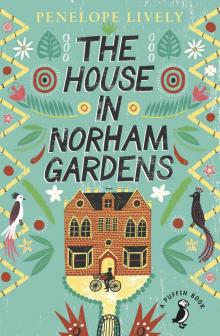 The House in Norham Gardens
The House in Norham Gardens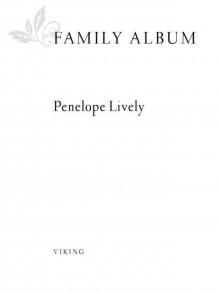 Family Album
Family Album Life in the Garden
Life in the Garden Oleander, Jacaranda: A Childhood Perceived
Oleander, Jacaranda: A Childhood Perceived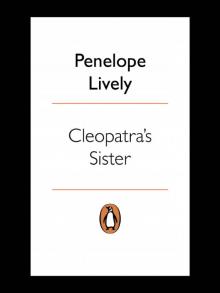 Cleopatra's Sister
Cleopatra's Sister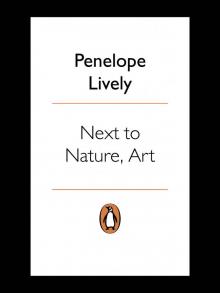 Next to Nature, Art
Next to Nature, Art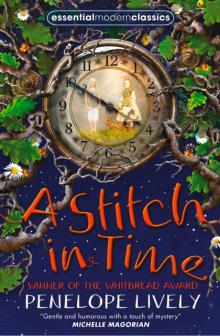 A Stitch in Time
A Stitch in Time Moon Tiger
Moon Tiger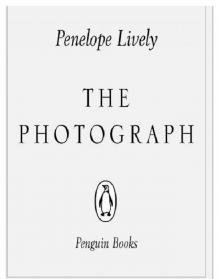 The Photograph
The Photograph Heat Wave
Heat Wave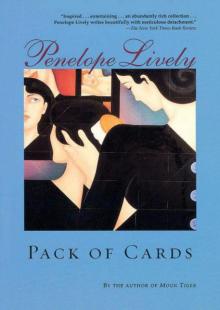 Pack of Cards
Pack of Cards Spiderweb
Spiderweb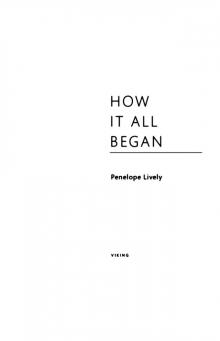 How It All Began
How It All Began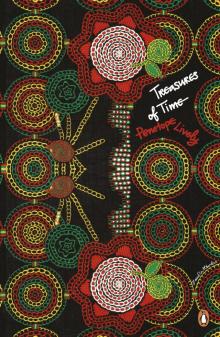 Treasures of Time
Treasures of Time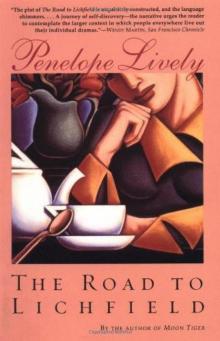 The Road to Lichfield
The Road to Lichfield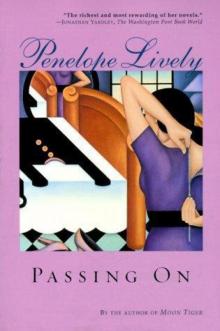 Passing On
Passing On Making It Up
Making It Up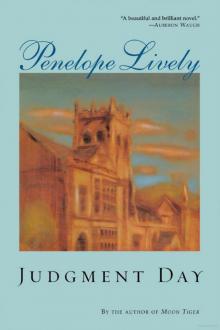 Judgment Day
Judgment Day The Purple Swamp Hen and Other Stories
The Purple Swamp Hen and Other Stories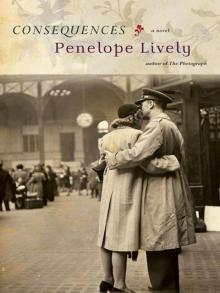 Consequences
Consequences *****Passing On*****
*****Passing On*****